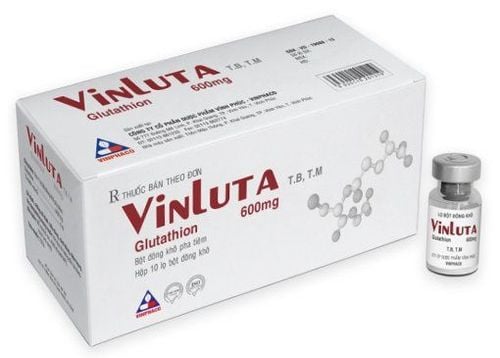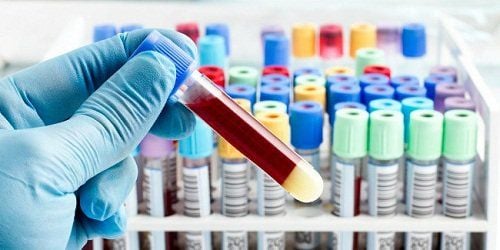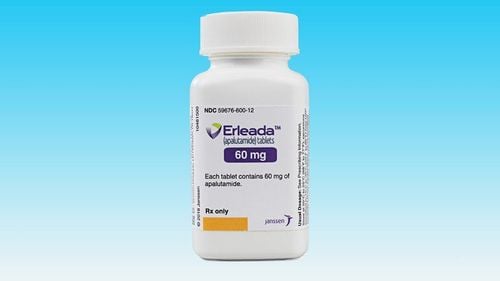This is an automatically translated article.
People with prostate cancer often have multiple treatment options, so personal preferences also play a role. Patients must fully consider, ask the doctor about the pros and cons of all methods, potential side effects, ... to make the most informed decision for themselves.
1. An overview of prostate cancer and its treatment
1.1. Concept
“Standard treatment” means the best option to cure this condition. When making treatment decisions, patients are encouraged to review clinical trials to determine if the new approach is safe, effective, or better than standard treatment. A clinical trial may include:
A new drug A new combination of the standard treatment A new dose of the drug compared to the standard dose Other treatments.

Một số loại thuốc mới sẽ được thử nghiệm lâm sàng trong điều trị bệnh ung thư tiền liệt tuyến
1.2. Follow
Aggressive Prostate cancer treatments can seriously affect quality of life. Also, many prostate cancers grow slowly and have no symptoms. Therefore, people with prostate cancer may consider delaying treatment rather than starting it immediately. During active monitoring, the doctor will monitor the patient closely through a variety of tests. If the cancer is found to be getting worse, treatment will begin.
Caution This may be an option for older men and those with other serious, life-threatening illnesses that are expected to live less than 5 years. If a patient develops symptoms of prostate cancer, palliative care can control those symptoms. Men with prostate cancer who are under active surveillance may be able to switch to cautious monitoring when life expectancy is shorter.
1.3. Topical treatments
Surgery Surgical options include open, robotic or laparoscopic radical prostatectomy, and bilateral orchiectomy. The choice of surgery depends on the stage of the disease, the patient's overall health, and other factors. People with prostate cancer should talk to their doctor about possible side effects before deciding to have surgery.
Radiation Therapy Radiation therapy is the application of high-energy radiation to destroy cancer cells. External radiation therapy is the most common type of prostate cancer treatment. In particular, a machine located outside the body directs radiation beams from different directions to focus the dose on the tumor, while reducing damage to surrounding healthy tissues and organs. Internal radiation therapy is the insertion of radioactive sources directly into the prostate for a short time (high dose) or a longer time (low dose). Intensity-modulated radiotherapy (IMRT) is the most common treatment.
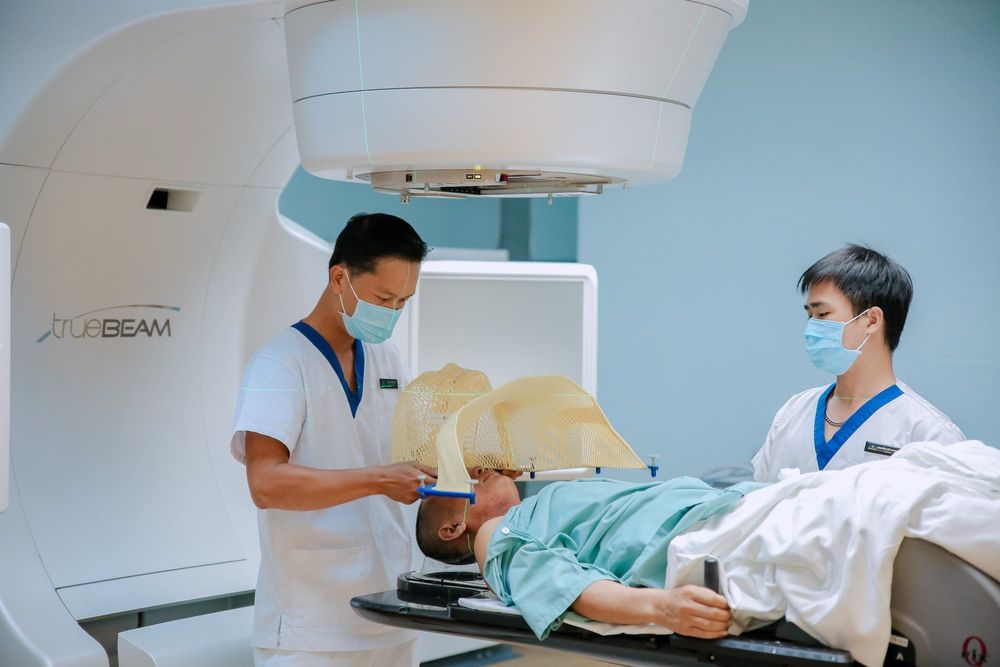
Xạ trị là một phương pháp điều trị ung thư tiền liệt tuyến tại chỗ
Focal therapy This is a minimally invasive treatment that destroys small prostate tumors without affecting the rest. High-intensity focused ultrasound (HIFU), cryotherapy, and other focal methods help treat low- or intermediate-risk prostate cancer. This therapy is still being studied and is not chosen as a standard treatment, rather often as part of a clinical trial.
1.4. Body treatments
Androgen suppression therapy (ADT) Prostate cancer growth is driven by androgens, most commonly testosterone. So lowering levels of these hormones - by surgical removal of the testicles, or taking drugs that inactivate testicular function - can slow cancer growth. To limit the side effects of this treatment, patients need to exercise regularly, quit smoking, eat a balanced diet, make sure they get enough vitamin D and calcium, monitor progress, and prevent cardiovascular disease.
Chemotherapy Chemotherapy is the infusion of drugs through a vein (IV), to reach and destroy cancer cells throughout the body. Chemotherapy usually involves a number of cycles over a certain period of time. The standard chemotherapy used for prostate cancer is usually docetaxel (Docefrez, Taxotere) combined with the steroid prednisone (many brand names). Because chemotherapy also destroys some healthy cells, it can lead to side effects such as hair loss, nausea and vomiting, mouth sores, and fatigue.

Khi sử dụng phương pháp hóa trị, người bệnh có thể bị rụng tóc
2. Things to consider
In the cancer care team, doctors often work together to provide an overall treatment plan for a patient. All treatment options and recommendations will depend on several factors such as:
Cancer classification Stage of cancer Potential side effects of the drug Patient's choice General health condition. People with prostate cancer should take the time to learn about treatment options and ask questions with their doctor, including:
Goals of each treatment Likely to prolong life Side effects related to urinary tract, bowel, sex and hormones Relapse risk Quality of life. In addition, the success of any treatment depends on the ability and expertise of the physician. So it's important to find people who have experience with prostate cancer and how it's treated. In particular, because prostate cancer has so many treatment options, it's important for doctors and patients to make decisions together.

Dù bị bệnh ở giai đoạn nào bạn cũng cần nói chuyện với bác sĩ để nhận được sự tư vấn
Most prostate cancer patients are detected at an early stage, the tumor grows slowly, so there is no rush to make treatment decisions. During this time, you should talk to your doctor about the risks and benefits of all treatments and the appropriate time to start, as well as discuss the current state of your cancer. Specifically:
Increased or stable PSA level Risk of cancer metastasis to bones Health history All other medical conditions
3. Prostate cancer classification and treatment by stage
3.1. Prostate cancer stage I and II
In the early stages, cancer often grows very slowly and takes years to show symptoms or other health problems. Therefore, active monitoring is recommended. External radiation therapy, radiotherapy, surgery, and clinical trials may also be recommended.
For prostate cancer patients with a high Gleason score, the cancer may grow faster. Therefore radical prostatectomy and radiation therapy will often be appropriate. Your doctor will consider your patient's age and general health before recommending a treatment option.
In the case of early prostate cancer that is not at high risk of spreading to other areas, doctors often recommend radical prostatectomy or radiation therapy combined with androgen-deprivation therapy. -ADT).
3.2. Regional prostate cancer (stage III)
Men with prostate cancer in the non-surgical area should not receive systemic treatment, ADT, or chemotherapy before surgery. Patients with prostate cancer who have chosen radiation therapy should receive standard treatment with ADT.
Treatment of ADT for 24 months is the generally accepted amount of time needed to control the disease, but 18 months is also considered sufficient. Adjuvant or enhanced radiation therapy will be given immediately after radical prostatectomy.
Careful monitoring during this period may be considered for:
Elderly patients Who do not wish to prolong life Cancer that does not cause symptoms People who have other more serious illnesses.
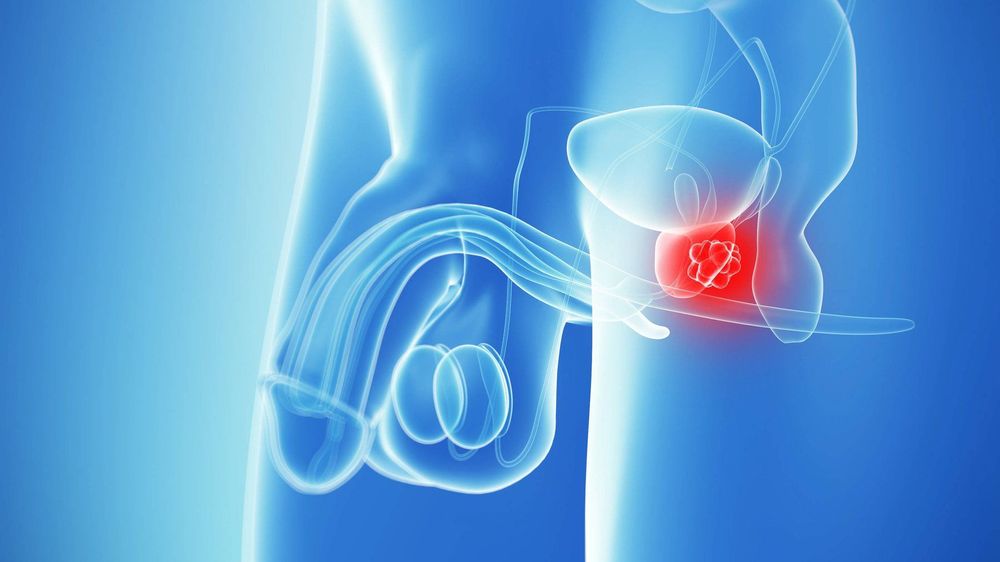
Điều trị tiêu chuẩn bằng ADT không được khuyên áp dụng với trường hợp ung thư tuyến tiền liệt tại vùng chưa phẫu thuật
3.3. Advanced prostate cancer (stage IV)
Prostate cancer in the area has a higher chance of metastasis, also known as spreading to a part other than the gland. If prostate cancer is at high risk for metastasis or has metastasized, doctors will work together to come up with the best clinical trial or standard treatment plan for the patient. To feel comfortable with the chosen plan, the person should learn more about the second option before starting treatment.
Prostate cancer is curable depending on the stage of detection. There is no cure for metastatic prostate cancer, but treatment can help patients live longer for a while, even if the disease is advanced. Like living with a chronic disease such as heart disease or diabetes, metastatic prostate cancer requires ongoing treatment to control symptoms and maintain quality of life.
4. Remission and risk of recurrence
Remission is when cancer cannot be detected in the body and there are no symptoms. This condition can be temporary or permanent, causing many people to worry the cancer will return. In general, people with recurrent cancer often experience emotions such as cynicism or fear. Although there are treatments to prevent recurrence such as ADT and radiation therapy, it is still a good idea to ask your doctor about the possibility of the cancer coming back, in order to feel more prepared. Health professionals use nomograms to estimate a person's risk of recurrence.
Usually, after surgery or radiation therapy, the level of PSA in the blood will decrease. If the PSA level begins to rise again, it is a sign that the cancer has returned. The cancer may return to the prostate gland (local recurrence), in nearby tissues or lymph nodes (local recurrence), or in another part of the body (such as bones, lungs, or liver), or metastatic recurrence. Sometimes the doctor can't find a tumor even though the PSA level has increased, which is called biochemical PSA recurrence.

Người bệnh không nên quá lo lắng khi ung thư tiền liệt tuyến tái phát
5. If the treatment is not effective
Is prostate cancer curable? Cancer is not always curable. If left unchecked, the disease will progress to end-stage cancer.
This diagnosis is stressful and can be difficult for many people to accept. However, it is important to have an open and honest conversation with your doctor to express your feelings, interests, and concerns. The healthcare team has exceptional skills, experience and knowledge, ready to help and support patients and families with their physical and emotional comfort.
People with advanced prostate cancer and expected to live less than 6 months may consider hospice care - a type of palliative care, designed to provide the best quality of life in the late stages of life . They are encouraged to choose care at home, in a special center or other locations, to ensure patient comfort to the very end. After the death of a loved one, family members also need support to cope with the loss.

Khách hàng có thể đến Trung tâm Xạ trị Bệnh viện Đa khoa Quốc tế Vinmec để được thăm khám và điều trị bệnh
Vinmec International Hospital Radiation Center has routinely performed radiotherapy for prostate cancer on the most advanced Clinac iX accelerator system (Varian Company, USA) today. Many patients achieve satisfactory results with few side effects, often making a full recovery after treatment. The clinics are fully equipped with high-tech and standard equipment, ensuring that patients are monitored, examined, and cared for comprehensively before, during and after radiation therapy.
Besides, in order to improve service quality as well as bring convenience to customers, Vinmec now also deploys Prostate Cancer Intensive Care Package. Customers wishing to consult on the diagnosis and treatment of prostate cancer can come to Vinmec International General Hospital
With equipped facilities, advanced and modern medical equipment and a team of Doctor with deep expertise and extensive experience. At Vinmec, the examination process becomes fast with accurate results, saving costs and time for patients.
Please dial HOTLINE for more information or register for an appointment HERE. Download MyVinmec app to make appointments faster and to manage your bookings easily.
References: cancer.net, iconcancercentre.sg




